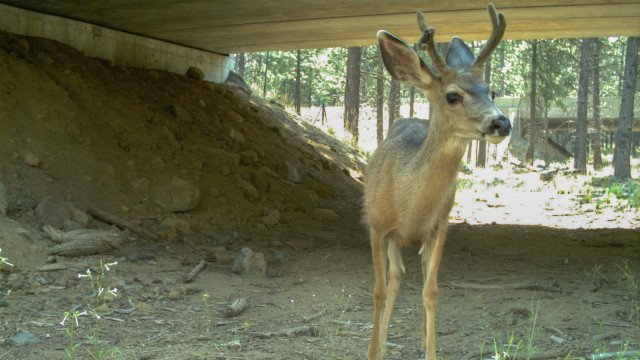Oregon lawmakers put $7 million toward more wildlife corridors, for safer highways

SALEM, Ore. (KTVZ) -- Travelers and wildlife are always on the move. Unfortunately, those paths often cross in tragic ways. Every year in our state, there are over 6,500 reported crashes involving wildlife, and one out of every five known mule deer deaths is caused by a vehicle.
Not only do the collisions affect wildlife, but they cost millions to vehicle owners who struggle with bills for damage, insurance, and doctor visits – not to mention the loss of life.
But hope for safer wildlife passage is on the horizon. the Oregon Department of Transportation said in a news release Monday, which continues in full below:
The Oregon Legislature recently passed a bill allocating $7 million in general funds for ODOT to invest in wildlife corridor projects. This is a special one-time allocation that will go directly towards keeping cars and wildlife on separate paths.
In recent years, the Oregon Department of Transportation has had great success with wildlife undercrossing structures. Five crossings have been built to date in the state, all on U.S. Highway 97, and have shown a huge reduction in wildlife collisions: around 86%.
Other states in the West have also found great success with wildlife passage programs and infrastructure. California and Utah both have 50 wildlife passage structures, Nevada has 23, and Colorado leads the pack at 69.
Cidney Bowman, wildlife passage coordinator for ODOT, already has ideas about how to put this new money to good use. Bowman says there are many ways to help wildlife and reduce crashes.
“Wildlife undercrossings are one option, but the money could also help fund studies, retrofit existing structures, and pay for research into new wildlife detection technology,” says Bowman. “It’s great. This money is what we've been asking for -- for a long time.”
While ODOT has recently focused its efforts in Central Oregon, Bowman says ODOT is looking to contribute to projects all over the state, including supporting a project that the Burns Paiute Tribe already has in the works.
Improving safety on U.S. 20
Calla Hagle, Natural Resources director for the Burns Paiute Tribe, has been overseeing a feasibility study on how wildlife travel along Highway 20, which winds through the traditional homelands of the tribe.
“In 2016, we were prompted by a high number of mule deer-vehicle collisions and a declining mule deer population to begin researching and compiling data on mule deer movement, habitat use, road crossings, and vehicle collisions,” Hagle says of the feasibility study. “It’s one of the worst deer-vehicle collision hotspots in the state.”
The study describes options such as retrofitting existing structures like culverts and bridges to make them available to mule deer for passage.
“To the tribe, mule deer are important both for their intrinsic cultural value, and as an important source of game. Mule deer populations are in decline throughout their range,” says Hagle.
Not only are mule deer important to the tribe, but Hagle says the cost of doing nothing is high.
“Oregonians spend millions of dollars each year on vehicle repairs and possible injuries,” says Hagle. The feasibility study estimates that $16 million was spent over 12 years on Highway 20 in Malheur County alone.
Sustainable funding moving forward
While this new funding will go a long way toward making our highways safer, ultimately, says ODOT’s Bowman, the goal is to have yearly dedicated funding for wildlife passage, similar to how the state funds its fish passage program.
Hagle pointed to a recent report from the Oregon Action Team on Ungulate Migration that identifies $22 million to $35 million in immediate funding needs for wildlife crossing projects across the state.
“We expect that this additional funding from the Oregon Legislature will help to directly fund wildlife passage projects, as well as, and perhaps more importantly, an investment of critical match for Infrastructure Investment and Jobs Act funding,” says Hagle.
With more consistent money coming in to the wildlife passage program, and a potential match in grant funding from the federal government, Oregon is on its way to safer roads -- for drivers and animals alike.